Here’s one that came from one of our social channels. I’ve changed the names to “protect the innocent” and I can’t post a picture. But I’ll describe it as much as I can.
Is there a problem with my dish?
One of our social followers told us that their dish has been having problems. Things had been working well for years, and suddenly it looks like something’s wrong. They posted a picture, and the dish was right up against the wall. The roofline covered the top part of the dish.
Right away, some of the more extreme folks on the internet started saying there’s no way it could have ever worked. If the dish can’t see sunlight, people said, there’s no way that it’s going to work at all.
So, let’s take a good look at that. I believe this customer when they say that the dish worked fine for many years and there’s a good reason why it might. But first, let’s explain how satellite dishes work.
Parabolic antenna design
What we call a satellite dish is actually referred to as a parabolic antenna. The purpose of a parabolic antenna is to get a lot of signal and focus it on a particular point in space. This image explains it pretty well:
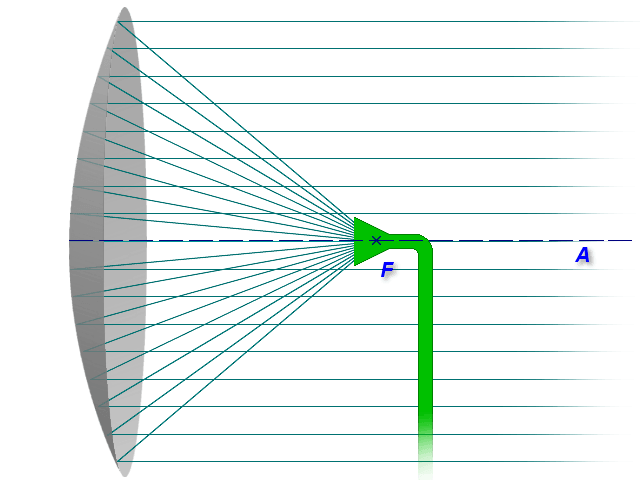
All those incoming signals bounce off the back reflector and toward the front “LNB.”
Consumer satellite dishes use an “offset” design. This lets the dish be pointed more toward the horizon and still see signals from space. The benefit here is that it’s very rare for the dish to be pointed so close to straight up that water would collect in it.
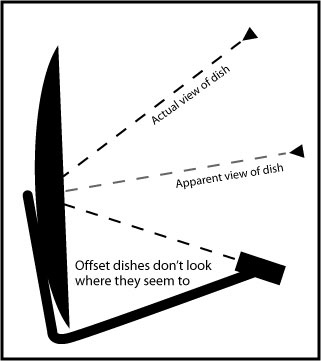
In an offset design, the LNB is lower and that means signals can come in from a higher elevation even if the dish is facing more perpendicular.
Where US satellites are, in space
The satellites that serve US pay-TV are all clustered over the equator, in different spots. When we talk about “the 101 satellite” we are talking about a satellite that’s at roughly 101 degrees west longitude and zero degrees latitude, about 22,500 miles above the surface of the earth. In order to see that satellite, you need to tilt the dish differently depending on where you are in space. Here’s a simple drawing. It doesn’t really show the offset dish aspect of things but it makes the point.
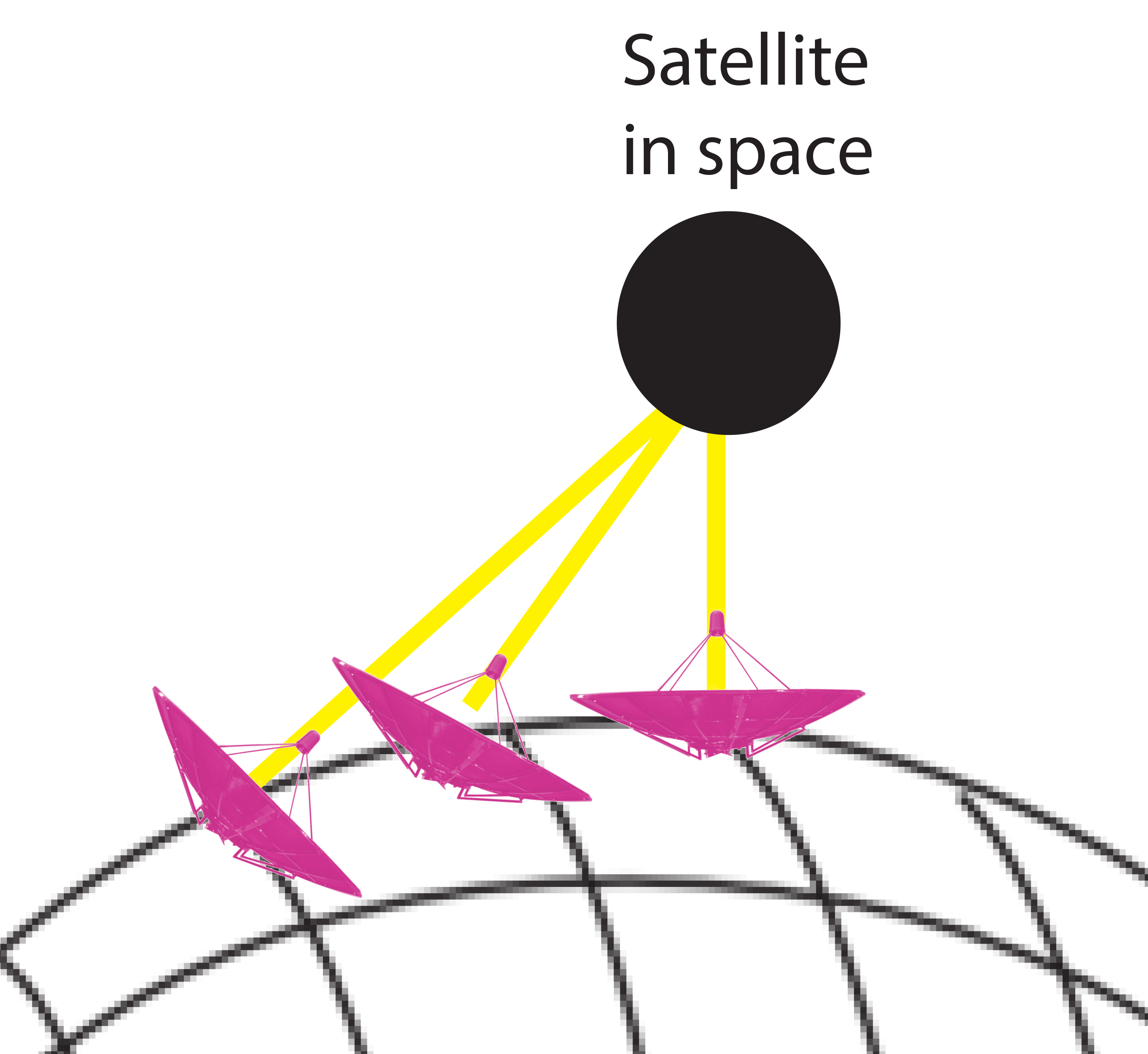
The closer you get to the equator, the more that your dish has to be pointed straight up in order to get the best signals. Another way of looking at that is that as you go further north, the dish points more toward the horizon and less toward the sky.
Let’s look at it another way.
If you are down in the southern part of the country, your dish could be aimed like this:
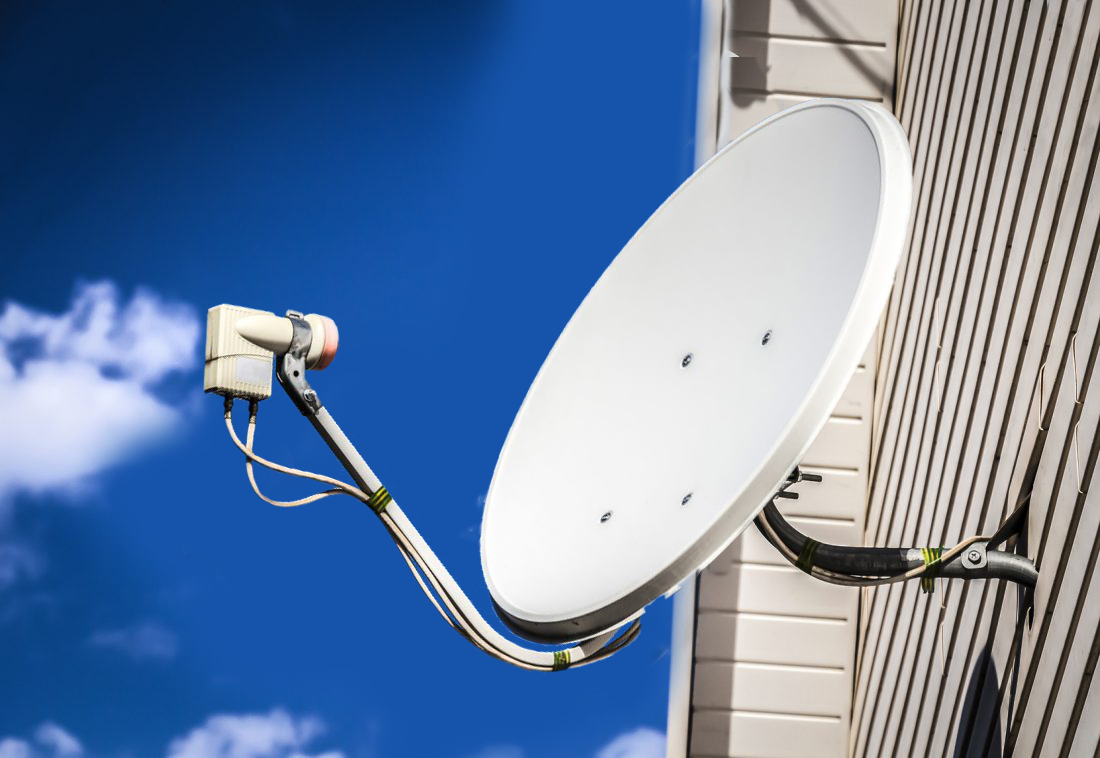
That dish needs to be pointed more up toward the sky since it’s closer to the equator. On the other hand, to get good service up north, the same dish would need to be pointed more like this:
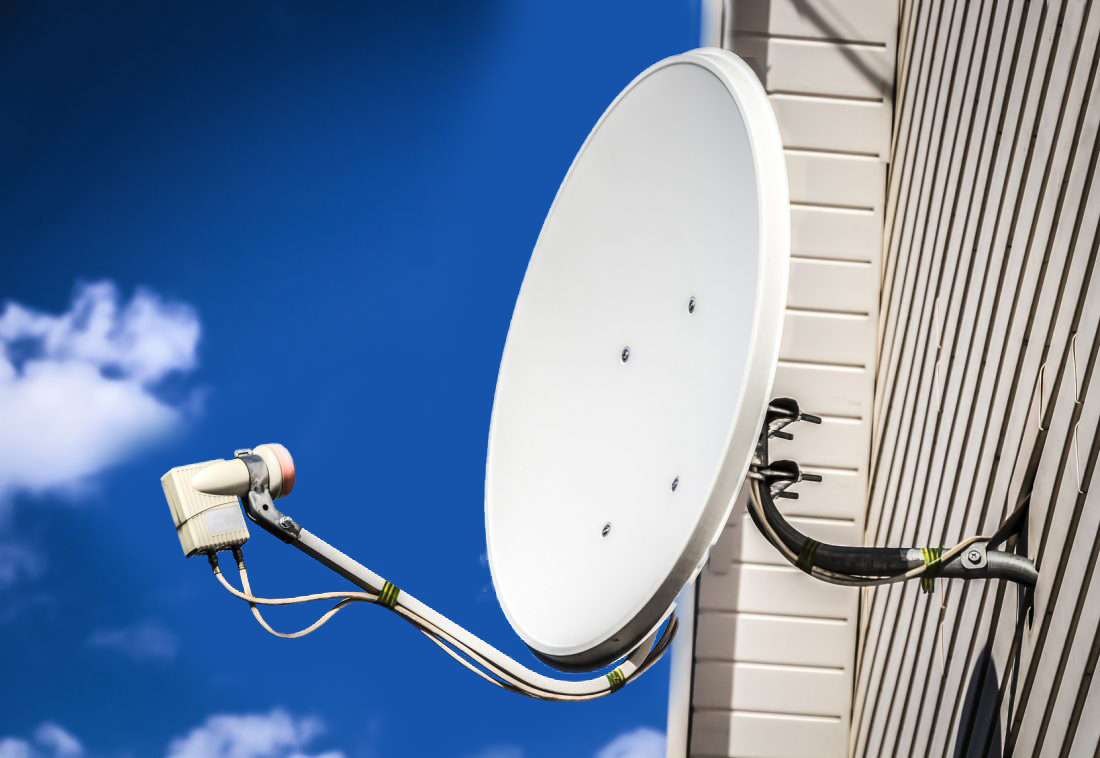
As you get further north, the line to the equator is more toward the horizon
And this is why this worked for this person
I’m guessing they were far enough north that they were able to get a decent amount of signal even with the dish under an eave. They probably would have gotten better signal if they’d kept the dish further out, but it worked for them. I’m sure it did.
Bottom line though, the real problem for them was they needed a new LNB. If you need one too, shop the great selection at Solid Signal.





